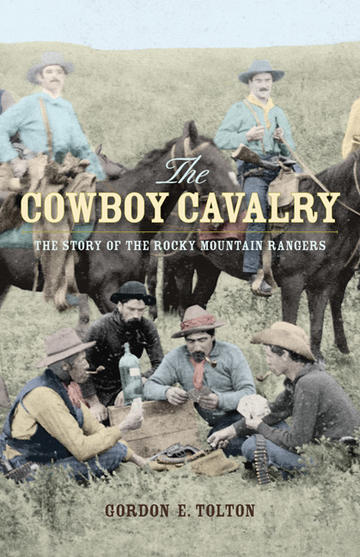When Native and Métis unrest escalated into the Northwest Rebellion of 1885, white settlers in southern Alberta's cattle country were terrified. Three major First Nations bordered their range, and war seemed certain. In anticipation, 114 men mustered to form the Rocky Mountain Rangers, a volunteer militia charged with ensuring the safety of the open range between the Rocky Mountains and the Cypress Hills. The Rangers were a motley crew, from ex-Mounties and ex-cons to retired, high-ranking military officials and working ranch hands. Membership qualifications were scant: ability to ride a horse, knowledge of the prairies, and preparedness to die. The Rangers were resolutely prepared to fight, as mounted cavalry, should the rebellion spread.
This is their story, inextricably linked to the dissensions of the day, rife with skirmishes, corruption, jealousies, rumour, innuendo and gross media sensationalizing . . . all bound together with what author Gordon Tolton terms "a generous helping of gunpowder."
- Age:
- 15
- Grade:
- 10
What Alberta boy with an interest in history wouldn’t want to read about mountain man/trapper/scout Kootenai Brown, the aristocratic rancher Lord Boyle and the other colourful characters who ended up in the RMR?” — Alex Rettie,Alberta Views
Tolton does an excellent job of explaining the strategic positions held by the leaders of the Blackfoot, Blood, and Peigan First Nations—respectively, Crowfoot, Red Crow, and Eagle Tail Feather—and why Riel’s fight was not necessarily their fight.” —Tanja Hütter, Canada’s History
Tolton's meticulous research reveals unexplored perspectives and little-known details. Dissensions of the day, rife with skirmishes, corruption, jealousies, rumour, innuendo and gross media sensationalizing . . . are all bound together with what author Gordon Tolton terms a generous helping of gunpowder. —Canada's History
The Cowboy Cavalry fills an important gap in our understanding of the events of 1885 in southern Alberta.” —Brian Hubner, Great Plains Quarterly
“[Tolton] knows all about the history of southern Alberta circa 1885, as he shows in his new book, ” —Richard Amery, Lethbridge Sun Times



